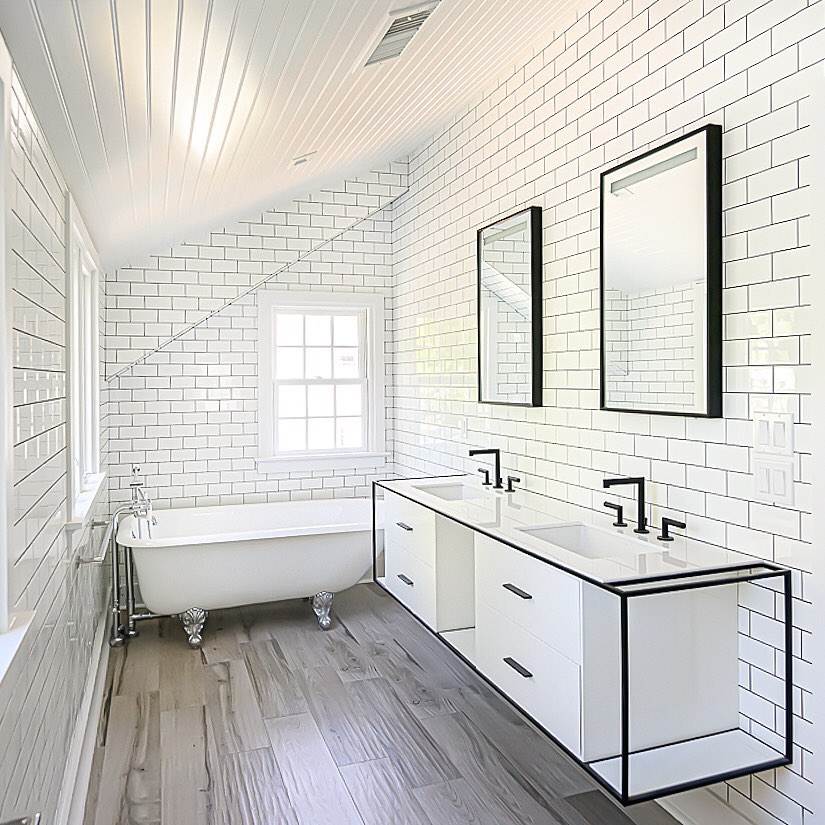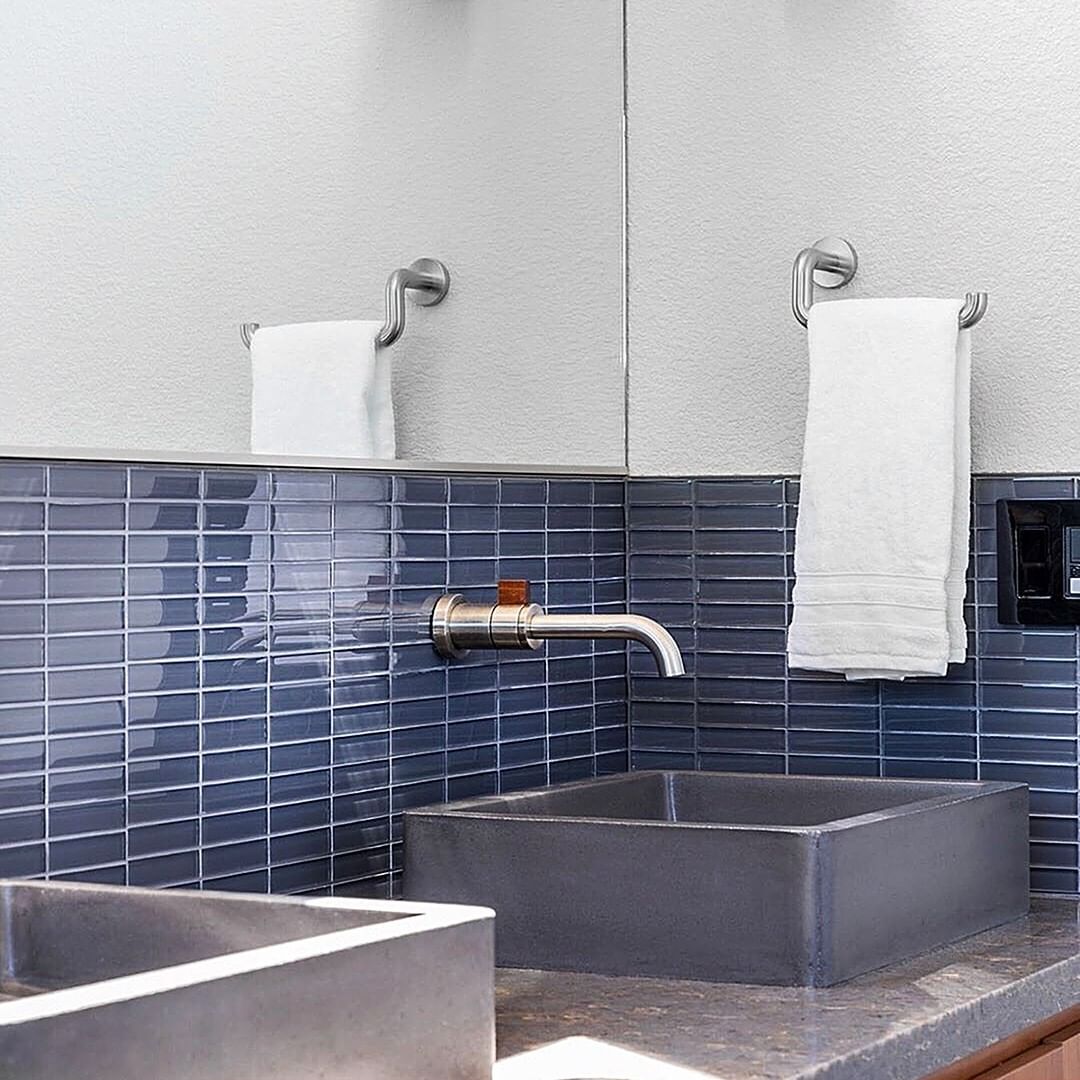The subway tile is an essential element of interior design that holds a storied 100-year history, having first emerged in the early twentieth century as an easy-to-clean, sleek surfacing solution for the subterranean spaces beneath New York City streets. The ubiquitous three-by-six-inch rectangular tile has evolved from applications across Manhattan subway stations to installations within contemporary commercial and domestic interiors across the country. “This iconic tile was its own baseline for its design evolution,” says Erica Puccio of TileBar. “Throughout the decades it has been translated into an array of style options, but really becoming a staple item when developing the essence of a space.” The information below provides a brief history of the timeless and tactile appeal of the subway tile.
Overview and Origins
New York’s first official foray into underground transit took place in 1904 with the inaugural subway line stretching from the old City Hall station in lower Manhattan to 145th Street in Harlem. Architects Christopher Grand La Farge and George C. Heins were tasked to devise a surfacing solution for the subterranean subway stations that would be suitable from both an aesthetic and hygienic standpoint. The designer duo aligned their vision with a 19th-century, Victorian-era enthusiasm for the cleanliness. With slightly curved edges and a slick glossy sheen, the subway tile served as an ideal solution since it was stain-resistant and could be easily cleaned. Their hygienic benefits were boosted by the familiar, friendly feel that they emanated for city dwellers cautiously filling the first fleets of underground trains. Assimilating these advantages, the architects suffused the stations with unifying swaths of white glass tile. The glazed finishes of the polished, bright white subway tiles served to subtly reflect light in the shadowy underground spaces while their monolithic fields of color could be enhanced by inviting, intricate mosaics.
Characteristics and Contemporary Uses
Since the time that subway tiles first emerged, a revered reputation and timeless aesthetic has allowed them to easily evolve and adapt to an array of interior applications over the years. “The subway tile was originally created to help design a clean and bright look in the New York City subway stations,” says Puccio. “But they quickly became popular because of a simplicity and versatility to build timeless designs on so many other project types.” Their distinct designs have continued to clad the walls of many contemporary kitchens, baths, and commercial spaces. “We still love the subway tile today because it allows a designer when working with it, to do what a designer does best, which is create spaces that are not dictated by the materials, but by their ideas,” adds Puccio.
While most often associated with utilitarian urban spaces, the traditional style and classic shape of subway tiles—defined by a uniform size and thickness with rectified edges, a flat surface, and thin trim of grout—have been adapted to fit the needs of fluctuating aesthetics over the years. “Best known as a white glazed three-by-six-inch format for interior wall applications, the subway tile has come a long way,” says Puccio. “Modern technology as well as popular trends in the design industry have allowed the subway tile to become available in a variety of colors and different sizes making for more unique options. The industry has also modified the body, the composition of the tile, to create suitable applications like commercial flooring and exterior cladding, promoting more possible design solutions. But even used in its classic format, the subway tile still creates timeless spaces we so admire today.” The same properties that made subway tiles a practical choice at the time of their initial installation underground have continued to serve them well within modern milieus.
Thank you to Material Bank for the original version of this article, posted to their knowledge bank.







